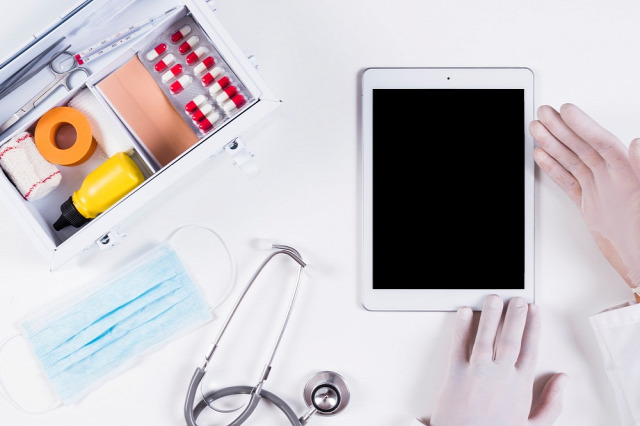
The offloading devices market is gaining significant traction as the prevalence of diabetes and related complications, such as diabetic foot ulcers (DFUs), continues to rise globally. Offloading devices, designed to reduce pressure on the foot and promote healing in patients with DFUs, have become essential in modern wound care. According to BIS Research, The global offloading devices market was valued at $1,207.5 million in 2023 and is anticipated to reach $1,546.6 million by 2030, witnessing a CAGR of 3.60% during the forecast period 2023-2030.
Offloading Devices Market Drivers
- Rising Prevalence of Diabetes and Diabetic Foot Ulcers: The increasing incidence of diabetes worldwide is a primary driver of the offloading devices market. Diabetic foot ulcers are a common and serious complication of diabetes, leading to prolonged hospital stays, reduced quality of life, and even amputations in severe cases. Offloading devices are critical in managing DFUs by redistributing pressure away from the affected area, facilitating wound healing and preventing further complications.
- Advancements in Offloading Technologies: Technological advancements in offloading devices are enhancing their effectiveness and patient compliance. Innovations such as custom-molded orthotics, advanced insoles, and wearable devices that monitor pressure distribution are improving patient outcomes. These advancements are driving market growth by offering more effective and user-friendly solutions for DFU management.
- Growing Awareness of Diabetic Foot Care: Increased awareness of the importance of diabetic foot care among healthcare providers and patients is contributing to the market's expansion. Educational initiatives and guidelines from organizations like the International Diabetes Federation (IDF) and the American Diabetes Association (ADA) emphasize the importance of offloading devices in preventing and managing DFUs. This growing awareness is leading to higher adoption rates of these devices in clinical practice.
- Expanding Geriatric Population: The aging global population is another key factor driving the demand for offloading devices. Older adults are more prone to developing diabetes and its complications, including DFUs. As the geriatric population continues to grow, so does the need for effective offloading solutions to manage and prevent these complications.
Offloading Devices Market by Region
The regional outlook for the offloading devices market reveals diverse growth patterns across various areas, shaped by local healthcare infrastructure, demographic trends, and economic factors. North America, which holds a significant share of the market, is expected to grow at a CAGR of 2.46% from 2022 to 2030, driven by advanced healthcare systems and a high prevalence of diabetes and obesity-related complications. Meanwhile, the Asia-Pacific region is anticipated to experience growth at a CAGR of 3.92%, spurred by increasing healthcare spending and greater awareness of chronic disease management in densely populated countries like China and India.
Request A Free Detailed Sample on Offloading Devices Market!
Europe is also expected to demonstrate strong growth potential with a CAGR of 3.84%, supported by well-established healthcare policies and an aging population. Although Latin America and the Rest-of-the-World regions have smaller market sizes, they are projected to achieve the highest growth rates at 4.88% and 5.06%, respectively, reflecting the rising adoption of healthcare technologies and increasing medical needs in these developing regions. Together, these varied regional trends highlight a steadily expanding global market, driven by broader shifts toward preventive healthcare and technological advancements in medical devices.
Challenges and Opportunities
The high cost of offloading devices and limited access to advanced diabetic foot care in developing regions are significant challenges facing the market. Additionally, patient non-compliance with prescribed offloading devices can hinder their effectiveness, leading to slower market growth.
Despite these challenges, the market presents significant opportunities for growth. The increasing focus on diabetic foot care, the rising trend of home healthcare, and the development of more affordable and accessible offloading solutions are expected to drive market expansion. Furthermore, ongoing research and development efforts are likely to yield new and improved devices, further boosting market growth.
Future Outlook
The offloading devices market is poised for sustained growth in the coming years, driven by the rising prevalence of diabetes and diabetic foot ulcers, advancements in offloading technology, and increasing awareness of diabetic foot care. As healthcare providers and patients continue to recognize the importance of offloading devices in managing and preventing DFUs, demand is expected to rise, particularly in regions with high diabetes rates and aging populations.
Some prominent names established in this market are:
- Getinge AB
- Bio Compression Systems, Inc.
- Essity
- Mölnlycke
- Cardinal Health
- FastForm Medical
Conclusion
The offloading devices market is set for robust growth, supported by a combination of demographic trends, technological innovations, and increasing awareness of the importance of diabetic foot care. Companies that continue to innovate and address the challenges in the market will be well-positioned to capitalize on the opportunities in this evolving market.

